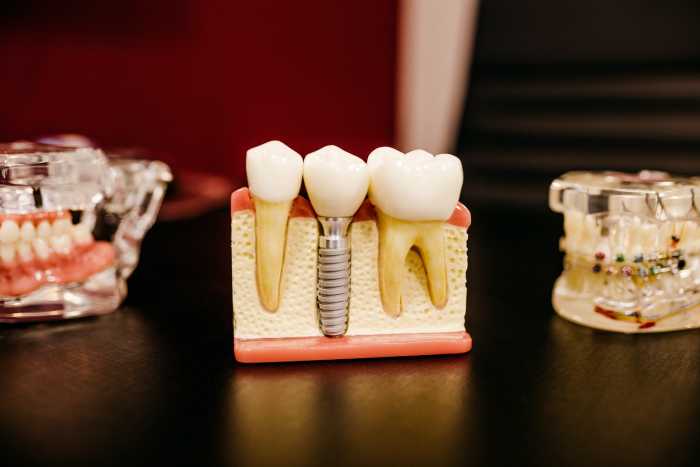Regular check-ups and good dental hygiene help to keep our teeth clean, straight and attractive. They act as the first line of defense against oral health problems. From time to time, we might experience issues with our teeth. Simple dental procedures can help to fix these issues.

Dental procedures may be preventative processes, cosmetic treatments or minor restorative treatments. Depending on your needs, you might require one of these procedures to keep your teeth in optimal shape.
1. Cosmetic Dental Veneers
Veneers are used to fix dental issues such as crooked teeth, chipped teeth or discoloured teeth. They also help to cover the gaps between teeth. A veneer is a hard, protective outer case for teeth made from porcelain or composite material. It comes in the form of a thin shell, which can be customised to fit your teeth and are cemented to the front of your teeth/tooth.
2. Dental Fillings
Fillings help to repair structural damage to a tooth or teeth. Structural damage may occur as a result of trauma, tooth decay, cavities, or wear. Depending on the problem with your teeth, the dentist will remove the problematic areas and then fill the tooth/teeth.
Fillings are usually made with porcelain, dental resin fillings, gold, silver, or amalgam. Each material used for fillings has its advantages and disadvantages. Your dentist will help you determine which filling material is best for you.
3. Dental Implants
A dental implant consists of an artificial tooth placed on a metal post. Dental implants are used to replace real teeth that have been lost or damaged. The surgical placements of dental implants allow them to look and feel like real teeth. They are inserted into the gum-line and help to maintain the symmetry of your dentition.

Implants make chewing and biting easy. They are most often used by older adults who have lost their teeth due to ageing.
4. Crowns or Caps
Crowns or caps are used to repair extremely decayed, stained, damaged, or misshapen teeth. A dental crown is a cover or cap placed on the part of the tooth above the gum. Dental crowns are a restorative procedure and they take about two visits to be completely installed. A crown is made with porcelain, acrylic, metal or a combination of porcelain bonded to metal.
For front teeth, pure porcelain crowns are used to create a natural look. Porcelain bonded to metal or all-metal crowns is used for teeth in the back of the mouth because they are stronger. Crowns are a good alternative when the tooth is too weak to contain a filling. Crown installation takes two visits to be completed.
5. Bonding
Bonding is a restorative procedure used to repair fractured, stained, chipped or decayed teeth. Bonding can be used to reduce the spaces between teeth. Bonding can be used on older teeth to create a younger look. Bonding is used on everyone from young to old because the resin can be replaced to match teeth growth.
Bonding involves the application of composite resin to teeth to restore its natural shape and beauty. The composite resin is mixed into a paste, tinted to match your natural teeth colour and then applied in layers to the teeth. Laser or ultraviolet light is used to harden each layer of resin, then the resin is shaped and polished to create a natural look.
6. Teeth Whitening
Teeth are stained by different substances such as food, berries, tea, coffee, and cigar/cigarette smoke. In addition to this, teeth yellow and darken as you age. Trauma can also discolour teeth. Various options are available for teeth whitening such as home treatments or a comprehensive whitening in the dentist’s office.
7. Extractions
Extraction refers to the removal of a tooth/teeth for several reasons. A decayed or damaged tooth may be extracted. Wisdom teeth are also removed when they cause problems or pre-emptively to prevent future problems. Orthodontic treatment may require permanent teeth to be extracted.
Sometimes, baby teeth may possess long roots that prevent them from falling out, in such cases, they have to be removed. Tooth extractions or removals are quite common and are a fairly common procedure.
8. Braces
Braces are used to align and straighten crooked teeth and overbites. They are also used to close up gaps between teeth. Braces apply pressure on the teeth to gradually align them into shape and close gaps. They allow biting pressure to be spread evenly across all the teeth. Braces are usually worn by children below the age of 18 but they can be used by adults.
9. Periodontal Treatment
Periodontal treatment helps to alleviate gum disease. In the early stage of gum disease, the treatment usually involves tooth cleaning and scaling every three-months. In addition, proper flossing and regular use of medicated mouthwash must be done. In the later stage of gum disease, periodontal treatment may include laser surgery, deep-plane scaling, and periodontal surgery.
10. Fluoride Treatment

Fluoride is an element present in most toothpaste tubes. Fluoride treatment helps to prevent tooth decay, plaque build-up, and cavities and can be done in a few minutes in the dentist’s office.
After a treatment, you should avoid drinking, eating or rinsing your mouth for a minimum of thirty minutes to ensure full absorption of the fluoride. You can have a fluoride treatment every three, six or twelve months. The frequency of treatments will depend on your doctor’s advice and on your oral health.
11. Dental Bridges
A dental bridge serves as a replacement for missing teeth. Dental bridges replace missing teeth with pontic (artificial replacements). bridges are made from porcelain, gold, alloys, or a combination of materials. The pontic is held in place and joined to neighbouring teeth using composite materials.
Since dental bridges are connected to other parts such as the gums, jaw and teeth, keeping your teeth and gums strong and healthy is a priority.
12. Dentures
Dentures act as natural-looking replacements for missing teeth or teeth that have been irreversibly damaged. teeth that are removable. Dentures may be full or partial. Full dentures are used in individuals who have lost or have had all their natural teeth removed.
Partial dentures fill in areas where permanent teeth have been lost. The dentures are attached to a metal frame, the metal frame is then joined to the teeth. Dentures require adequate care like natural teeth. Brush your dentures with a gentle cleanser and make sure to clean your gums and tongue as well. Keep your dentures moist if you are not using them.
Conclusion
Oral hygiene is extremely important. Apart from preventing halitosis, good hygiene keeps your teeth looking clean and healthy. Regular dental visits and examinations are a must for preserving oral health and tackling issues that may arise. Strong and healthy teeth can last until old age.











